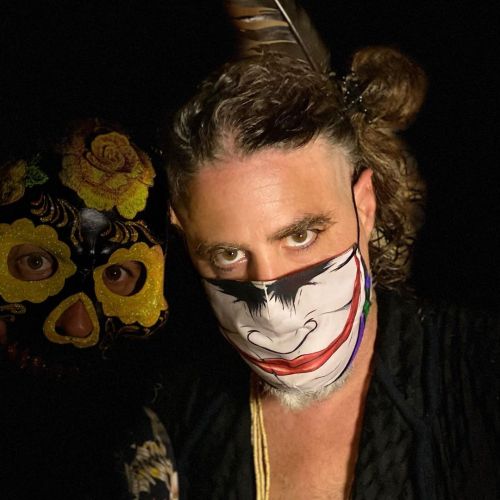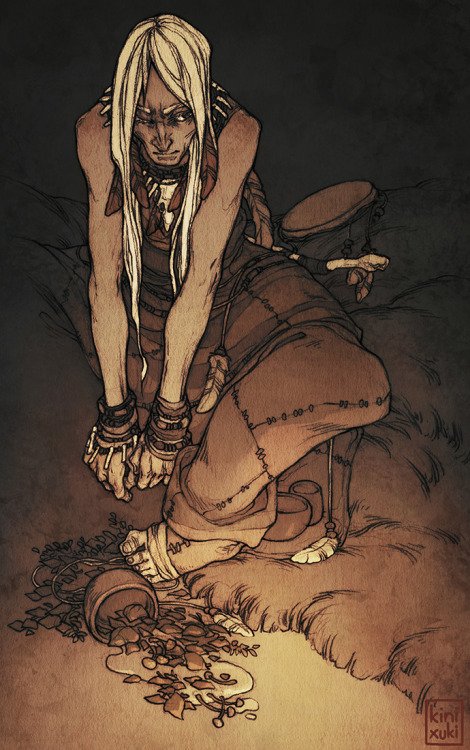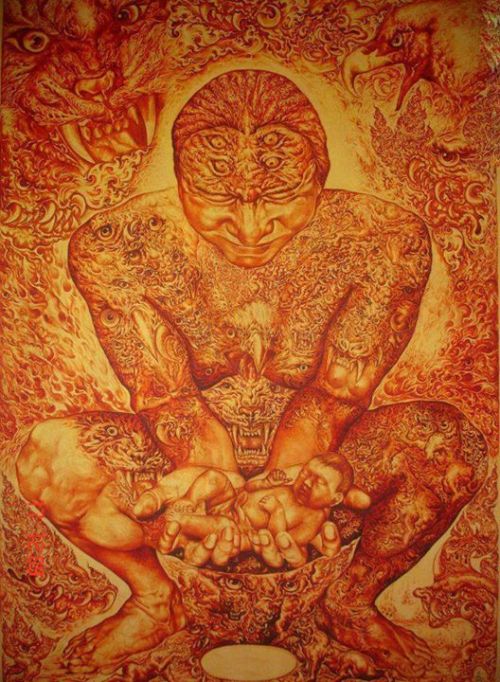#shamans
I have yet to put up the videos from our Talent Show we had on April 25 because Tumblr wants me to minimize the video file sizes…but one of our performers, Rob McMahon, is an energy healer (more info soon), and he is hosting an event this week in NYC for some Q'ero shamans. Here’s the message from Rob:
I hope you’ve been well! I’m writing today to share some exciting news with you. Don Francisco Chura Flores and his wife Dona Juana Apaza Ccapa, two exceptional healers from the Q'ero nation of the high Andes are going to be in NY for one week. During this time they will be offering a number of exciting events both in NYC and Westchester County, and performing individual healing sessions. We have a couple of evening despacho ceremonies scheduled, a Sunday afternoon workshop, and a closing fire ceremony. All of these events will be wonderful ways to get a taste of what these impeccable souls have to offer, and will serve to deepen our own connection to Source, Self, and Spirit.
I sincerely hope you’ll avail yourself of this wonderful opportunity!! Don Francisco and Dona Juana have never offered ceremony in the NY metro area before and when they are in the states they are usually partnered with the Four Winds Society and working out of places like Omega and Kripalu. We are exceptionally fortunate to have them here!!
You are welcome to attend any single event or come to multiple ones for a cumulative effect. The enclosed photo of myself and Don Francisco was taken after a week long Munay-Ki intensive that I did with him in Joshua Tree in the winter of 2011. He is an extremely joyous and playful soul as well as being an extraordinary energy worker and generally enlightened being.
A full and updated list of events is available here on the facebook invite which includes a link to the registration website.
https://www.facebook.com/events/369778719794575/?notif_t=plan_user_joinedAlternately you can go directly to the Earthkeepers’ website to register. http://www.earthkeepersfoundation.com/ However, bear in mind that some of the details on this page have yet to be update to reflect venue changes (i.e. the closing fire will be in Yorktown, NY not Armonk.)
Pre-registration and pre-payment are required for all events as space is limited and slots are filling quickly. If you intend to book a personal despacho ceremony or khuya healing, or plan on attending the Sunday workshop or any of the evening ceremonies, we encourage you to register as soon as possible to ensure your space.
As a post script you will find short biographies of Don Francisco and Dona Juana that help to explain their mission and why they have chosen to travel here and share their traditions with us. There is also a short video that does a good job of explaining what a despacho ceremony is and what you might expect from this experience with Don Francisco or Dona Juana.
I am deeply honored and humbled by the opportunity to share this news with you, and to spread the word about these powerful healers who have had such a profound impact on me personally and countless others.
Looking forward to seeing you in ceremony!!
With Love and Blessings,
RobBiographies:
Don Francisco Chura Flores is a “paqo” (Andean priest-healer – often described as shaman) from the Q'ero
nation. The Q'ero live in the high Peruvian Andes, far off the grid and far from the nearest road. Don Francisco’s
mission for the last few years has been working with people like us – people who are ready to reawaken to the
energies around them and to be a part of the “great shift” we are now experiencing. Don Francisco is a
ceremonialist by nature, a man more at home in his energy work that in speaking to and teaching groups. Yet, he
brings an infectious joy to everyone he meets, and a deep visible gratitude for each opportunity to work and play
with us. He speaks Spanish as well as his native Quechua.Dona Juana Apaza Ccapa describes herself as “Pachamama Nusta” (Earth Princess) and sees this quality in all
women. She has only in the last year begun to travel outside Peru, and our opportunity to experience her
manifestation of the Sacred Feminine is rare and wonderful. She, like her husband don Francisco, is a “paqo”
known as a “pampamesayok” (Carrier of the Earth Altar).The Q'ero hold a special place in Andean society. They are seen as the last direct descendants of the Inka, and
were traditionally seen as the spiritual advisors to the Inka leaders and people. To this day, they hold a special
place in the indigenous spiritual gatherings. They see this as a time when many of us in the developed world are
awakening to the ancient Wisdom Teachings, and a time when their way of life is changing, and they are no longer
to steward the ancient knowledge alone. Their children are leaving the village for an easier way of life. They see
US as part of their new lineage, and know that generations from now, when they have forgotten their connections
to the Earth and Mountains, WE we be there to remind them of who they are. Now is our time to remember who
WE are.
Click the link below to see a video of Don Francisco doing a Despacho
http://youtu.be/2kmhZmkBVtY
I started coming up with some ideas to make Goliath lore more interesting. I thought it would be cool if they had shamans who see glimpses of the future by spilling blood on ancestral stone and looking at how it spills over the stone.
Here are some sample omens based on how the blood spills that I have come up with (written from the perspective of the shaman):
“The blood trickles around these sacred stones like the weaving strands of a spider’s web. Just as the spider betrays the fly, someone aims to betray the chief.”
“Look, here, as the blood splashes against that stone and droplets of red seep into the dirt. Like the rain, it is. There will be a great downpour.”
“Ah, the blood pools in a small pond of crimson. But oh what is this that floats in the blood I have spilt? A raven’s feather. Oh, no. A great death approaches.”
“The blood trickles over this stone like a mountain brook. But oh. Oh no. Look as that Toad splashes in the blood. Our tribe shall face a coming plague.”
“Look, boy, as the blood swirls in a pattern that mimics the cosmos on a clear night. The spirals tell me that a great hero will soon be born.”
“Ah, yes, good. Just as the blood nurtures this flower that grows between the stone, so too will we be nurtured by good health this new year. This is good.”
As you can see it’s not just the pattern of the blood but how the blood interacts with the world around it. The shaman knows how to read the signs. Now so do you. Feel free to use in your own fantasy worlds, whether with Goliaths (or other giantkin), orcs, elves, humans, whatever you desire.
Also please note that just because blood is spilt and used to predict the future it doesn’t have to be evil. I imagine the shaman from my examples would be neutral good. And while it would make perfect since for a witch to do this too, witches dont have to be evil either.
I dont know what it is but there is something Evocative of freshly spilt blood on cold, mountain stone. It’s very mystical.
Enjoy.
PYRITE
Folk Names: Fool’s Gold, Pyrites, Iron Pyrite
Energy: Projective
Planet: Mars
Element: Fire
Powers: Money, Divination, Luck
Magical/Ritual Lore:
Pyrite was used by ancient Mexicans in fashioning polished mirrors, which may have been used to divine the future. Pieces of this strange mineral were also placed in American Indian shamans' medicine bundles, perhaps to lend extra energy.
In ancient China this stone was used to guard against crocodile attacks, a problem which, fortunately, most of us seem to avoid without the stone.
Magical Uses:
Popularly known as fool’s gold, pyrite is often found associated with real gold. So who, exactly, is the fool?
Because of the yellowish shimmer and shining nature of this "stone,“ it is used to draw wealth and money. Set five pieces of pyrite on your altar. Surround them with five green candles. Light the candles and visualize money coming your way, fulfilling your monetary needs.
Pyrite is also carried to bring money and luck.
A flat, shimmering surface of pyrite can be used as a magic mirror to awaken psychic impulses. Carried, it is a luck-bringer.
Post link
I am now also at @shamanesschokbar on Instagram with all the photos to enjoy. Follow me there!
Shamanic Power Animal dance gives an unparalleled opportunity to take a break from your ego self. It takes you to a place you have never been before. It makes your hidden fears visible, it’s vulnerable and it’s incredibly freeing. It heals you.
My non-physical Spiritual Teacher K.
Creature Comforts | Rubin Museum of Art
Here is an article I wrote on why it’s important to know, understand and practice your Power Animals.
Put together a list of what you want to do, and not what you want to achieve, because by regularly doing something - the result will appear on its own.
My non-physical Spiritual Teacher K.
Power Animal Workshop Intensive at the Rubin Museum of Art, New York City
Rubin Museum of Art
This Universe is based on attraction, which means every thought of yours immediately attracts ether high vibrational beings or low vibrational beings, who make it easy to continue the thought train you’ve started.
My non-physical Spiritual Teacher K.
ALIENS IN ACTION IS TERRIBLE NEWS FOR CONSPIRACY THEORISTS
—— ♂️The Retiring Vampire Column 11/23/20 on MagZuma News.
In this column, I explore the alternate narratives of Shamanic Elders, Pyramids and Greco-Roman structures, and what the Jewish sages of the Medieval Time had to say about that.
“To know the future, one must learn the past, and when history isn’t clear, we must question the narrative, but it does not happen. What actually happens is the deletion and reclamation of Old World structures and alternate histories. Everyone takes part in it. It’s an international sport.”
——Link to the column in bio
#oldworld #shamans #elders #aliens #ufo #conspiracytheories #shamanicelders #tartaria #jonlevi #mudflood #ancientarchitecture #hiddenhistory #vampires #precolombian #middleages #medievaltimes #sages #jewishhistory #talmood #rambam #ghostbusters
https://www.instagram.com/p/CII77qZAmJb/?igshid=61drzvlq9cht
Post link
Thanks to all who came to the opening of #SuzanneTreister #HFT #TheGardener which is on view until March 12. Fascinating works surrounding #highfrequencytrading #psychedelia #botanicals #gematria #alkaloids #shamans (at PPOW Gallery)
Post link
Drew this a while back and then wasn’t sure about how to color it, so after making several variations over past few months I decided to just finish it.
Post link

Images courtesy of the Pitt-Rivers Photo Collection.
Special Exhibition on until 2016 at the Pitt Rivers Museum - My Year in Siberia!
While the first battles of World War I were being fought, Maria Czaplicka was travelling the Yenisei Province of Siberia to study ways of life north of the Arctic Circle. Maria spent much of 1914-15 in this little-studied region, recording the lives and languages of the people she met.
Born in 1884 in Russian-dominated Warsaw, Maria was one of the young Poles to study with the “Flying University”, an underground organisation which between 1885 and 1905 secretly provided education for men and women alike. In 1910 she was awarded a Mianowski Fund scholarship. This enabled her to travel to England to study at Bedford Women’s College, London; and then at the University of Oxford as a member of Somerville College. She was awarded the Oxford Diploma in Anthropology in 1912.
In Oxford, where she was a contemporary of O.G.S. Crawford, she studied under Robert Marett, who encouraged her to review the available literature on the indigenous populations of Siberia. This work was published in 1914 as Aboriginal Siberia: a Study in Social Anthropology. In his forward to the book, Marett identified its importance as making accessible for the first time in English the Russian language work on the subject. The book became the major reference work on these communities of Asian Russia.
This region was little understood especially by contemporary British anthropologists who tended to focus their research on parts of the British Empire. Maria’s pioneering expedition to north-west Siberia began in May 1914. Maud Haviland (ornithologist), Dora Curtis (artist), and Henry Usher Hall (University of Pennsylvania Museum of Archaeology and Anthropology) met Maria in Moscow. They travelled by train to Krasnoyarsk, the regional administrative capital. From there, a three week journey by paddle-steamer north up the River Yenisei took them 1,500 miles to Golchika. It was late June, but the boat had to negotiate ice floes on the river. They spent the short Summer above latitude 70ºN in the tundra around the Yenisei estuary, exploring the people and the archaeology of the area. Maria collected objects from the people they met, and from the platform burial sites on the permafrost; took photographs; gathered plant specimens and mammoth bones; and wrote down her experiences.
Maud and Dora left at the end of the Summer. With Michikha, a Tungus (Evenki) woman, Maria and Henry spent Winter 1914/Spring 1915 travelling the mountainous area east of Turukhansk. Although Maria made light of the conditions in her book My Siberian Year, she experienced considerable hardships and illness through the Arctic Winter. Meals were eaten with nomadic reindeer-herding families; “Armed with this [knife] I caught hold of the meat with my teeth, and sliced off a mouthful, which I proceeded to masticate as well as its parboiled condition would permit”. The miles of walking and sledding from tent to tent were exhausting. Frostbite was an ever-present danger despite being “ensconced in a foot-bag made of the winter coat of a reindeer buck, and cased in thick Jaeger stockings worn inside a pair of dog’s-hair stockings and two pairs of hairy skin boots.”
Maria made a special study of shamanism and religion in the region, and also commented on the history and politics of Siberia. She also wrote poetically about the short days in the Winter landscape, “There is a rosy light that was never anywhere else by land or sea, that flushes the mountain peaks of the ‘stony’ tundra to an ineffable glory during the brief twilight days that precede the return of the sun in the spring, while the valleys and the lowlands are filled with a blue sea of unlifting shadow.” After her return to England in 1915, the objects she had collected with Henry were deposited in the Pitt Rivers Museum and the Pennsylvania University Museums, and the botanical specimens in the Fielding-Druce Herbarium (Oxford).
Maria seems to have completed some war work for the British Foreign Office’s War Trade Intelligence Department. In 1916 she became the University of Oxford’s first female lecturer in anthropology. Her three-year appointment came to an end in 1919. She toured the United States to meet leading anthropologists. In 1920 she was awarded the Royal Geographical Society’s Murchison Award, and she obtained a year-long teaching position at the University of Bristol. Sadly this promising career was cut short when Maria committed suicide in May 1921, a few days after her naturalisation certificate was issued. A fund in her memory was established at Somerville College. Her collected works, edited by David Collins, were republished by the Curzon Press in 1999.
post by Katy Whitaker
The Pitt-Rivers Museum, Oxford, has a Showcase display about Maria’s Siberian expedition on until 28 February 2016 (http://www.prm.ox.ac.uk/exhibitions.html)
Collins, D. and Urry, J. (1997) “A flame too intense for mortal body to support” Anthropology Today 13(6): 18-20
Czaplicka, M.A. (1914) Aboriginal Siberia: a Study in Social Anthropology Oxford: Clarendon Press [available at https://archive.org/details/aboriginalsiberi00czap]
Czaplicka, M.A. (1916) My Siberian Year London: Mills and Boon
“A Woman’s Travels.” Times [London, England] 8 Sept. 1915: 9. The Times Digital Archive. [Web] Accessed 16 October 2014 http://find.galegroup.com/ttda/infomark.do?&source=gale&prodId=TTDA&userGroupName=wiltsttda&tabID=T003&docPage=article&searchType=AdvancedSearchForm&docId=CS152372520&type=multipage&contentSet=LTO&version=1.0
“Death Of Miss M. A. De Czaplicka.” Times [London, England] 30 May 1921: 8. The Times Digital Archive. [Web] Accessed 16 October 2014 http://find.galegroup.com/ttda/infomark.do?&source=gale&prodId=TTDA&userGroupName=wiltsttda&tabID=T003&docPage=article&searchType=&docId=CS135467198&type=multipage&contentSet=LTO&version=1.0
Home Office (1921) HO 334/92/8081 Naturalisation Certificate: Marie Anteinette Christine Elizabeth Lubicz de Czaplicka. From Poland. Resident in Bristol. Certificate A8081 issued 24 May 1921 [The National Archives] http://discovery.nationalarchives.gov.uk/details/r/C11938471







